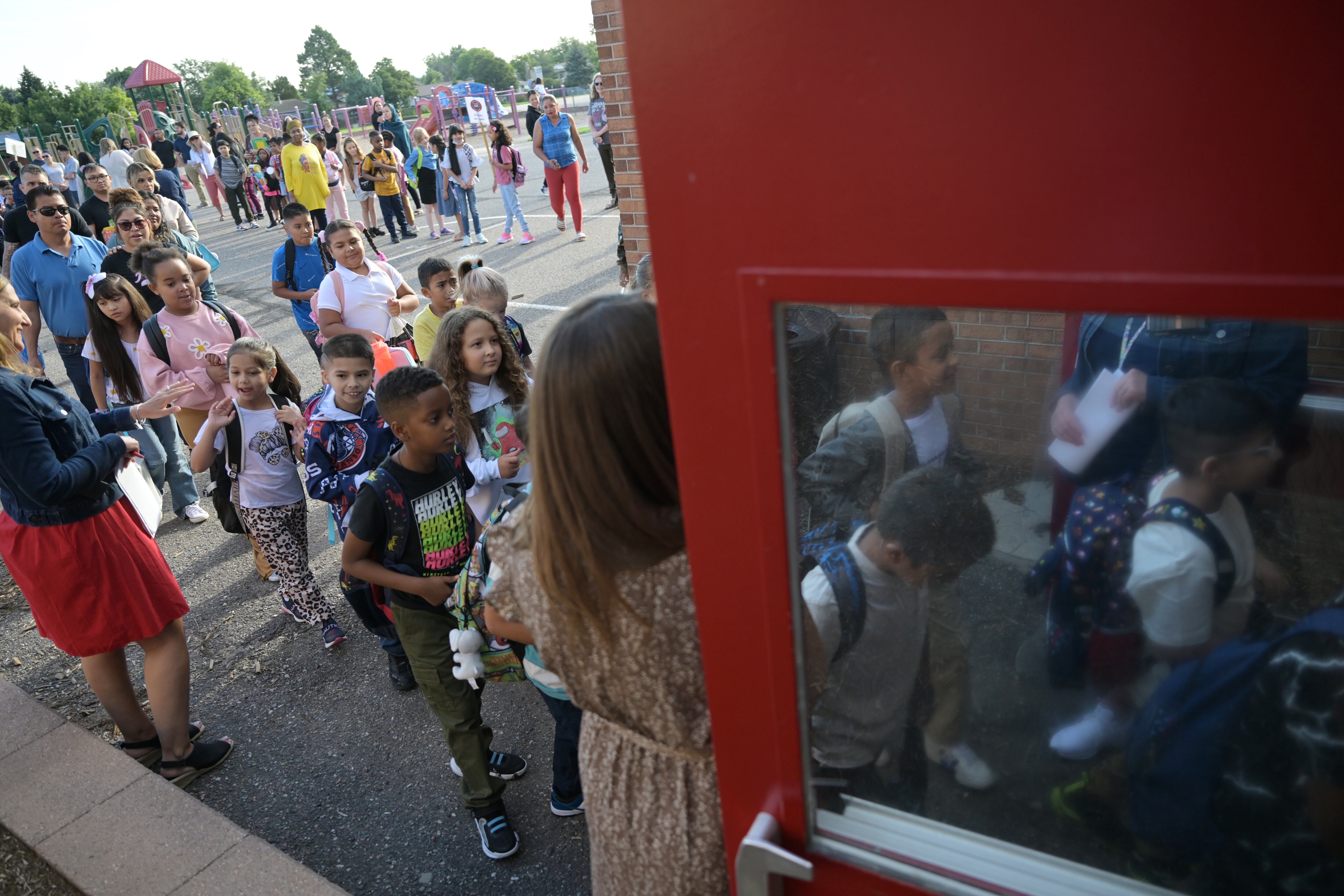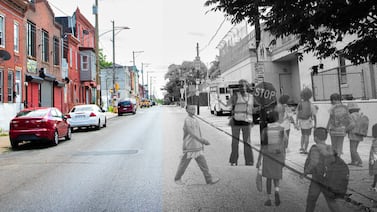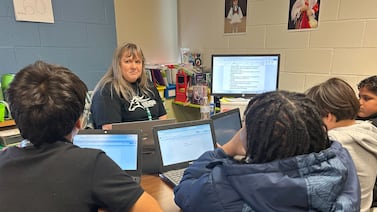Sign up for Chalkbeat Colorado’s free daily newsletter to get the latest reporting from us, plus curated news from other Colorado outlets, delivered to your inbox.
The number of students in Colorado schools continues to drop and is now lower than it was after the large decrease in enrollment at the start of the pandemic.
In October 2023, 881,464 students were enrolled in public schools, down 1,800, or 0.2%, from October 2022, according to official enrollment counts released by the Colorado Department of Education Wednesday.
Before the pandemic, enrollment numbers in Colorado had been increasing every year since the 1980s. But in fall of 2020, after months of mostly remote learning, enrollment sank by about 30,000 students from the previous year. In fall of 2021, enrollment went up slightly, but has been falling again since.
State Demographer Elizabeth Garner told the State Board of Education last week that the decline in enrollment is due partly to decreasing birth rates, but also to a slowdown in migration and mobility.
“We are forecasting that total school-age population to decline basically through 2028-2029, then start to increase, but not get back to levels that we saw in 2019 until about 2035,” Garner said.
She said the trend is statewide.
“Forty-three of the 64 counties had an absolute decline in the under-18 population over the last decade,” Garner said. “It doesn’t matter where you were — Eastern Plains, San Luis Valley, West Slope, Denver metro.”
In a statement, Colorado Education Commissioner Susana Córdova noted concern about the drop in enrollment among the youngest students.
“We know that pre-kindergarten and kindergarten are where students build critical foundations for life-long academic success including language development, early literacy, and social skills,” she said.
Still, she said, “we are encouraged by the state’s commitment to early learning through the Colorado Universal Preschool Program.”
The universal preschool program provides free preschool to all Colorado 4-year-olds and some 3-year-olds. This year, about 50,000 students are enrolled in various types of public and private preschools across the state. Public school districts’ pre-K programs have 32,060 students, slightly fewer than a year earlier.
First grade and kindergarten saw some of the largest decreases in enrollment this year. First grade enrollment declined by 3.91%, or 2,478 students, compared with the first grader group of 2022. Kindergarten had 1,068 fewer students, a 1.79% drop. Eighth grade and ninth grade also had large enrollment declines.
Only five grade levels saw an increase in students compared with last year. The largest increase was among second graders, up by 5%, or more than 3,000 students.
Other segments that grew included those who are home-schooled, and those who are enrolled in online programs.
Enrollment in charter schools decreased by 1.8% to 135,223.
The number of students identified as experiencing homelessness statewide went up by 1,570 compared with last year.
Last school year only one district in Colorado, Adams 12, had more than 1,000 students identified as needing services related to homelessness. This year, there were four such districts — Aurora, Adams 12, Jeffco, and Poudre.
By percentage, the tiny district of Sheridan continues to have the highest proportion of its students experiencing homelessness in the metro area, but the number has dropped over the years. This school year, 149 Sheridan students, or 14.1%, are experiencing homelessness, down from 205, or 18.2%, last year.
Broken down by race, white students had the largest decreases in enrollment, while Hispanic or Latino students had the largest increases. Schools counted 312,687 Hispanic or Latino students in October 2023, up from 308,739 the year before.
By percentage, Native Hawaiian or Pacific Islander students had the largest enrollment jump: 9.18% more than last year. These students make up a tiny proportion of all Colorado students.
Among the state’s largest districts, just a handful recorded more students than last year. They include Aurora Public Schools, which had a slight increase, and Denver Public Schools, which gained 371 students. Denver has attributed the increase to an influx of migrant students, many from Venezuela.
Among the metro-area districts, School District 27J in Brighton had the largest growth in enrollment. It gained more students than Denver, Aurora, or any of the large districts. Meanwhile, Sheridan, Westminster, and Adams 14 had the largest decreases in the metro area.
The state’s data reflect official student counts in October, and those are the counts typically used to determine funding levels.
But the state’s release acknowledged that several districts have seen a large number of students who are new to the country arriving throughout the school year.
“CDE is committed to working with districts and school teams to ensure they are supported in serving these multilingual learners,” the department’s statement notes.
Look up enrollment changes at your district in the table below:
Yesenia Robles is a reporter for Chalkbeat Colorado covering K-12 school districts and multilingual education. Contact Yesenia at yrobles@chalkbeat.org.





